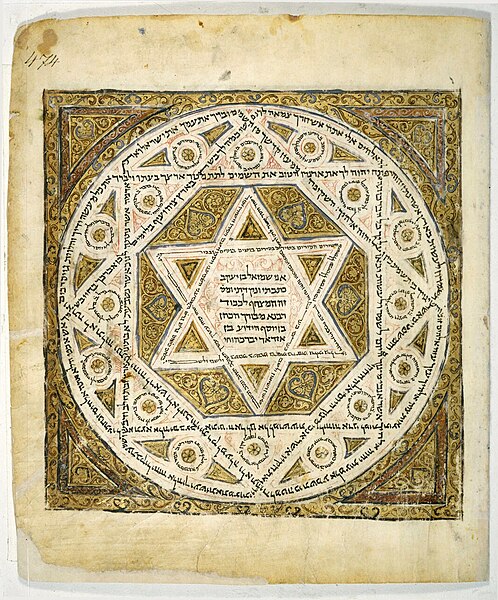Qere and Ketiv refers to a system for marking differences between what is written in the consonantal text of the Hebrew Bible, as preserved by scribal tradition, and what is read. In such situations, the qere is the technical orthographic device used to indicate the pronunciation of the words in the Masoretic text of the Hebrew language scriptures (Tanakh), while the ketiv indicates their written form, as inherited from tradition.
An image from the Masoretic Aleppo Codex of Deuteronomy 33, containing a qere and ketiv in the second column, the fifth line, the second word (33:9). The ketiv is "Beno" - "his son" בְּנוֹ, while the qere is "banaw" - "his sons" בָּנָיו.
The Masoretic Text is the authoritative Hebrew and Aramaic text of the 24 books of the Hebrew Bible (Tanakh) in Rabbinic Judaism. The Masoretic Text defines the Jewish canon and its precise letter-text, with its vocalization and accentuation known as the mas'sora. Referring to the Masoretic Text, masorah specifically means the diacritic markings of the text of the Jewish scriptures and the concise marginal notes in manuscripts of the Tanakh which note textual details, usually about the precise spelling of words. It was primarily copied, edited, and distributed by a group of Jews known as the Masoretes between the 7th and 10th centuries of the Common Era (CE). The oldest known complete copy, the Leningrad Codex, dates from the early 11th century CE.
Carpet page from the Leningrad Codex, the oldest complete manuscript of the Masoretic Text.
A page from the Aleppo Codex, showing the extensive marginal annotations.


